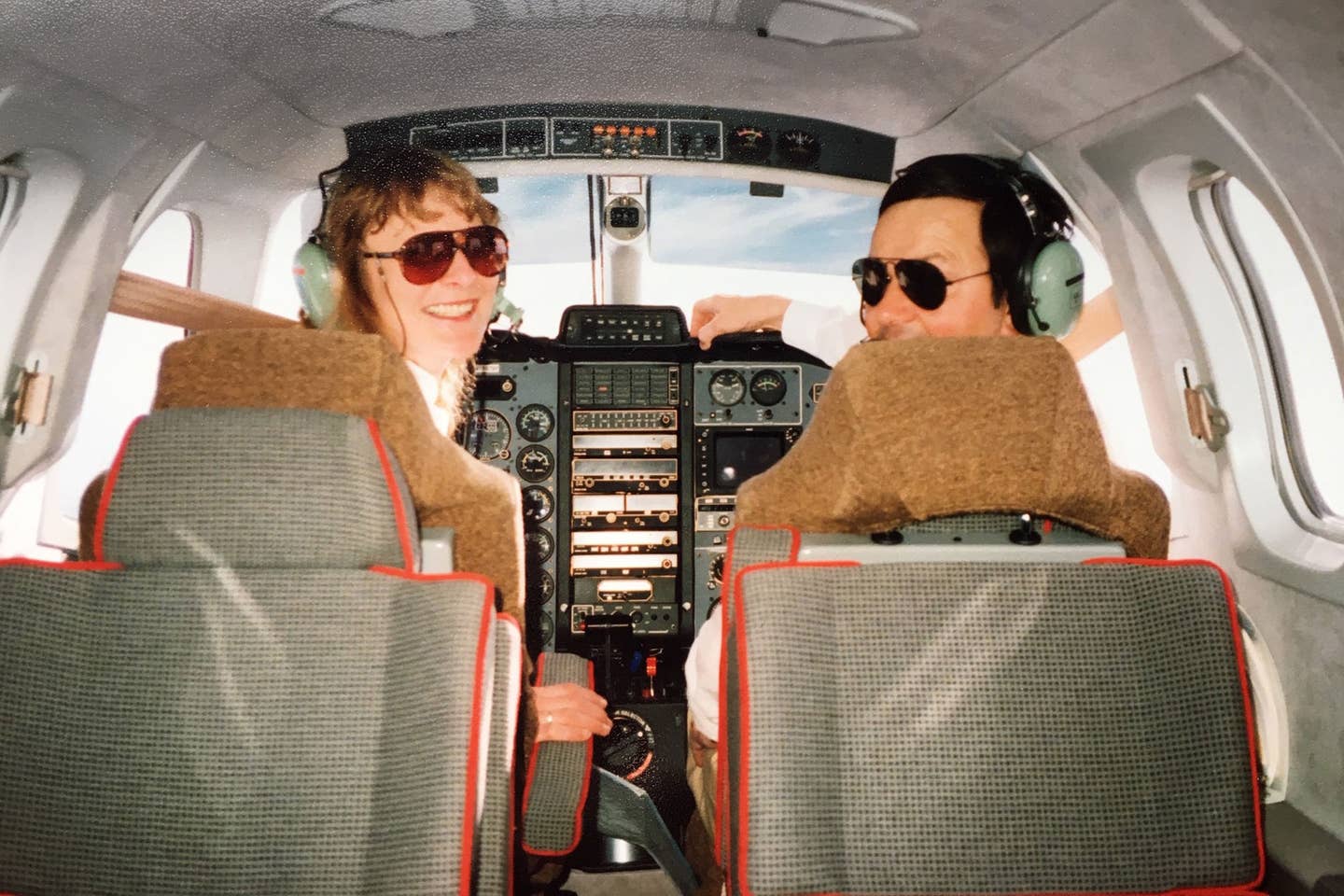
Magrit Waltz made her first ferry flight in any TBM model with a TBM 700 flight in 1991, with TBM test pilot Christian Briand. Courtesy Daher
Though any record of completed transatlantic flights is unofficial, Magrit Waltz surely ranks among those pilots who have made the most outside of wartime. Launching from Tarbes, France, on May 11, Waltz set out on flight number 900, in a new Daher TBM 940, N64MA, from the manufacturing facility there. The aircraft was headed for Muncie Aviation, in Indiana.
Waltz departed Tarbes (LFBT) at 11:13 GMT for Wick, Scotland (WIC); then on to Keflavik, Iceland (KEF) for the night. At 9:41 GMT on May 12, she left for Goose Bay, Labrador (YYR), arriving at 11:05 am ADT, and continuing on to Bangor, Maine (KBGR), with an ahead-of-schedule arrival at 13:03 EDT. The legs ranged in length from 3:16 for the first leg, then 2:27, 4:52, and 2:02 respectively—with the 940′s maximum ground speed en route clocking in at 389 mph (338 knots) on the final leg, with 368 mph (318 knots) the top ground speed on the segment from Wick to Keflavik.
Waltz began ferrying aircraft for Daher and its previous entities in 1991, ferrying a TBM 700 with TBM test pilot Christian Briand. She’s since delivered more than 200 TBMs from France to the market in North America. But her time in the skies above the North Atlantic dates back much further, beginning in 1976, when she started to fly a variety of GA aircraft for several distributors and OEMs.
Waltz reported to Flying that she considers the main “difficulties” in any crossing to be on the ground—dealing with customs, passport control, and, perhaps, “suspicious authorities.”
“Ocean crossing with a single engine requires to have a life raft and survival suit,” said Waltz, “with special procedures to report your position. HF installation is no longer mandatory, especially with the use of [a] sat phone, which [performs better].” According to her, “The key to a successful ferry is weather to anticipate the fact the wind direction and strength may change abruptly, especially during the segment between Scotland [and] Greenland.” Making one small concession to the relative risk of any ocean crossing, Waltz decided that after her 50th [birthday], she would ferry only turbine airplanes, such as the 940.

Sign-up for newsletters & special offers!
Get the latest FLYING stories & special offers delivered directly to your inbox






